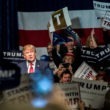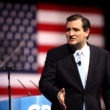To say that this election could go either way is not to say that the Republicans have any chance of winning it. As a civic entity responsive to the voters’ will, the party’s over, there being no American majority that backs it, or that ever would. Bush has left the GOP in much the same condition as Iraq, Afghanistan, the global climate, New Orleans, the Bill of Rights, our military, our economy and our national reputation. Thus the regime is reviled as hotly by conservatives as by liberals, nor do any moderates support it.
So slight is Bush’s popularity that his own party’s candidates for Congress are afraid to speak his name or to be seen with him (although their numbers, in the aggregate, are even lower than his). It seems the only citizens who still have any faith in him are those who think God wants us to burn witches and drive SUVs. For all their zeal, such theocratic types are not in the majority, not even close, and thus there’s no chance that the GOP can get the necessary votes.
And so the Democrats are feeling good, and calling for a giant drive to get the vote out on Election Day. Such an effort is essential—and not just to the Democrats but to the very survival of this foundering Republic. However, such a drive will do the Democrats, and all the rest of us, more harm than good if it fails to note a certain fact about our current situation: i.e., that the Democrats are going to lose the contest in November, even though the people will (again) be voting for them. The Bush Republicans are likely to remain in power despite the fact that only a minority will vote to have them there. That, at any rate, is what will happen if we don’t start working to pre-empt it now.
Even though this election could go either way, neither way will benefit the Democrats. Either the Republicans will steal their “re-election” on Election Day, just as they did two years ago, or they will slime their way to “victory” through force and fraud and strident propaganda, as they did after Election Day 2000. Whichever strategy they use, the only way to stop it is to face it, and then shout so long and loud about it that the people finally perceive, at last, that their suspicions are entirely just—and, this time, just say no.
AN INCONVENIENT TRUTH—That Bush/Cheney stole their “re-election” is not a “theory” but a fact that has by now been proved beyond the shadow of a doubt. The case was made, first, by the House Judiciary Committee—or rather by its Democratic members, who conducted a meticulous inquiry into the debacle in Ohio. (The Republicans boycotted the investigation, and obstructed it.) Its findings were released on January 5, 2005, in the so-called Conyers Report, after Rep. John Conyers (D-MI), the committee’s ranking Democrat. The Republicans attacked it, and the press and leading Democrats ignored it; yet that report was sound, its major findings wholly accurate.
In July of that year the Democratic National Committee came out with its own study of Ohio, which offers still more evidence of fraud—before concluding, weirdly, that there was no fraud but rather much “incompetence” (all of which somehow helped only the GOP). Despite its stated contradiction of the House report, the DNC analysts disprove not one of Conyers’s findings.
A few months later, the House report was bolstered by a thick volume of evidence compiled by the investigators who had helped the Democrats conduct their research in Ohio: Bob Fitrakis, Harvey Wasserman and Steve Rosenfeld. Their book How the GOP Stole America’s 2004 Election and Is Rigging 2008 reconfirms the House report with rich documentation, and evidences further fraud as well. Although the book went largely unreviewed, its findings proved unassailable; as did my essay in the August 2005 issue of Harper’s, “None Dare Call It Stolen”(this was the first time any major medium addressed the issue).
While such works dealt only with Ohio in 2004, others soon appeared, demonstrating that Team Bush, that year, defrauded the electorate nationwide. My book Fooled Again documented the ultra-rightist crime wave that undid countless votes not only in Ohio but in Florida, Pennsylvania, Oregon, New York, New Mexico, Nevada, Arizona, Minnesota, Michigan, Wisconsin, South Dakota, Iowa, New Jersey, Georgia, Arkansas, Louisiana, Texas, Alabama, Mississippi and the Carolinas. It also detailed the interference of Bush/Cheney with the votes of millions of Americans abroad.
Despite a national media blackoutno reviews in any major U.S. dailies or newsmagazines, no interviews on network TV or radio, or on NPR or PBSFooled Again eventually found a large readership through the Internet, C-SPAN, Air America, and broad local radio coverage.
This past June, the case against the Bush regime was expanded by three major works. Steve Freeman and Joel Bleifuss’s Was the 2004 Election Stolen? devastates the fiction that the exit polls conducted on Election Day were wrong. Despite Freeman’s scrupulous research, that book too went unreviewed. Greg Palast’s Armed Madhouse dissects the huge fraud(s) whereby the Bush/Cheney ticket “won” New Mexico despite the strongly Democratic inclination of the state’s Hispanic voters, who turned out in record numbers to dump Bush. (Somehow, over 17,000 of them cast no vote for president, according to the e-voting machines deployed in Democratic precincts.)
More noticeably, Rolling Stone ran Robert F. Kennedy, Jr.’s, comprehensive study of Ohio, “Was the 2004 Election Stolen?”a piece the media could not ignore because its author was too famous. Thus Kennedy appeared on some shows that had been closed to all us other analysts, although his piece relied explicitly on our research; and even he was treated like a fantasist, or a felon, by the likes of Neil Cavuto, Tucker Carlson, Wolf Blitzer and Charlie Rose. Aside from those interrogations (and a decent head-to-head with Stephen Colbert, who let him finish several sentences), Kennedy too was disrespected by the media, which either blacked him out or put him down.
In short, the awful truth about 2004 has been denied by right and left alikeand, strange to say,more loudly on the left. Indeed, whereas the right has largely chosen to avoid the issue, the only journalists who have purported to “debunk” the “theory” of Bush and Cheney’s stolen re-election have been liberals and progressive (and, ordinarily, excellent reporters): Mark Hertsgaard at Mother Jones; Russ Baker at TomPaine.com; David Corn at The Nation; and, above all, Farhad Manjoo at Salon.
Their “refutations” of the case are largely based on the mere exculpatory say-so of a few unconscious (or complicit) Democrats. And yet, although the work of these debunkers has itself been thoroughly debunked (and Manjoo, therefore, quietly assigned to other topics), it has done much to propagate the myth that there’s “no evidence” that Bush & Co. subverted our democracy. Such denials have been persuasive not because they are well argued but because the truth is terrifying, and a lot of people (including those reporters) very badly need a reason to believe that all is well. Such wishful thinking has kept “the liberal media” from dealing with the direst threat that our democracy has ever faced.
And yet most of our fellow citizens sense that threat. A Zogby poll in August found that only 45 percent of the American people felt “very confident” that Bush was re-elected “fair and square,” while the rest either doubted it or were “not at all confident” about it. The numbers of the blithe have been decreasing as the people have learned more and more about BushCo’s fascistic antics in 2004—and, as well, about the fatal flaws in the e-voting systems that the Republicans have been aggressively promoting since 2000. (Some Democrats have abetted them.)
The flaws of such systems have been exposed repeatedly by activists like Bev Harris, Brad Friedman, Clint Curtis, Lynn Landes, Earl Katz and Bruce O’Dell, and have also been solemnly detailed in many academic studiesfrom, among others, NYU’s Brennan Center for Justice; Princeton’s Center for IT Policy; RABA Technologies; SAIC (Science Applications International Corporation); the U.S. Government Accountability Office; and a cohort of computer scientists at Johns Hopkins, Rice and Stanford universities. (See previous issues of the Washington Spectator, here and here.)
Read together, all those exposés and studies tell of a close and wholly illegitimate relationship between the corporate vendors of those voting systems and Bush/Cheney’s GOP. Three of the four firms that sell those systemsDiebold, ES&S and Hart InterCivichave tight links with the party. The fourth, Sequoia, has also tended to malfunction in Bush/Cheney’s favor.
Now we have strong evidence of a covert partnership between those interests that “count” some four-fifths of U.S. votes and the party that controls our government. In a follow-up piece for Rolling Stone, Robert F. Kennedy, Jr., quotes the shocking testimony of a Diebold whistle-blower who, along with other employees, took part in the surreptitious placement of a software “patch” in the company’s machines in Georgia (whose electoral system had, just weeks before, been privatized through a secret contract with the Secretary of State). The order came directly from Bob Urosevich, president of Diebold’s e-voting machine division. “We were told not to talk to county personnel about it,” says Chris Hood, a consultant to the company. And what about that patch? “We were told that it was intended to fix the clock in the system, which it didn’t do,” Hood noted. “The curious thing is the very swift, covert way this was done.”
All this happened one sticky day in August 2002. On Election Day, some ten weeks later, the official outcome of the vote baffled everyone: Senator Max Cleland, a Democrat whom polls showed had been leading his opponent, Saxby Chambliss, by five points, lost by seven points. In the race for governor, Democrat Roy Barnes, who had been leading Republican Sonny Perdue by eleven points, lost by five. Both losses were inexplicable, and Cleland’s was especially poignant. A war veteran and triple amputee, Cleland was quite popular in Georgia, whereas Chambliss was unknown—and a chickenhawk to boot, a “bad knee” having kept him out of Vietnam. Chambliss’s attack ads had cast Cleland as a traitor, because he had voted against establishing the Department of Homeland Security. And now the people of the Peach State had apparently been swayed by their fear of terrorism into believing that those ads were right.
That year there were other such anomalies, induced, perhaps, by what some wags called “Diebold magic,” as the company’s product figured heavily in those other states where far-right candidates won upset victories: Colorado, where Republican Wayne Allard, down by nine points against Democrat Tom Strickland, won by five points; and New Hampshire, where Republican John Sununu, down by one point against Democrat Jeanne Shaheen, won by four points.
As odd as such reversals seemed, and as conspicuous a role as Diebold evidently played in them, there were no calls for inquiry, as it was easier to say that “terrorism”—or maybe “family values”—had simply grabbed the voters’ hearts and minds in Georgia, Colorado and New Hampshire. (Diebold, in fact, had no hand in Republican Norm Coleman’s startling victory over Walter Mondale in Minnesota—the born-again New Jerseyite having trailed the favorite son by five points, then winning suddenly by three.) Thus did the Bush Republicans take back the Senate, thereby canceling out the Democratic edge enabled briefly by Jim Jeffords’s controversial exit from the GOP.
SAVING OUR DEMOCRACY—We must delve into the recent past, not to quibble over ancient numbers but to find out where we really are today. For what happened in some states four years ago, and in most states two years ago, is still happening now, and in more states than ever: a vast, complex and incremental process of mass disenfranchisement—which is, in fact, the only way the Bush Republicans could ever get “elected,” as their program is notconservative but radical, irrational, apocalyptic: i.e., unacceptable to most Americans, liberals and true conservatives alike.
This is why they’ve gerrymandered Texas and (less visibly) Virginia—and also why they’ve packed the Supreme Court with comrades disinclined to outlaw gerrymandering (unless it’s Democrats who try it). This is why they are dead-set against repealing state laws disenfranchising ex-felons—and also why they’ve used the “war on drugs” to jail as many likely Democrats as possible. (This would also help explain the post-Katrina diaspora, and especially the out-of-state internment of over 70,000 Louisianans.) And this is why the Bush Republicans push e-voting machines in every state, and program them to flip votes cast by Democrats into votes “cast” for Republicans, and systematically provide too few machines to Democratic precincts, and keep on arbitrarily removing Democrats from voter rolls, and “challenge” would-be voters at the polls, and simply throw out countless ballots of all kinds, and spread disinformation on Election Day. These are just some of the devices that were used not only in Ohio to ensure Bush/Cheney’s “re-election,” but in every state where they could pull it off—on both coasts, in the Midwest, and throughout the South.
In the next issue of the Spectator, I’ll elaborate on the GOP’s two likeliest moves in November’s mid-term elections. For now, we must do all we can to make everyone aware of what’s been going down—and, most important, what is now at stake. As the press and the Democrats have failed to call for any actual reform of the election system, Bush and Co. are now in a superb position to retain their legislative power, regardless of how people vote (or try to vote).
We need a massive turnout in November—but not because it will put Democrats in power. We need the biggest turnout ever, as a protest on behalf of free and fair elections in America. Such a turnout will make it that much harder for the Bush Republicans to spin their victory as legitimate. (This is why the GOP in several states, including Maryland and Colorado, is urging people to vote absentee next month: to make the opposition appear that much smaller.) But more important, such a turnout will prepare people for the crucial fight to come—the effort to save our democracy.
If we get millions out to vote, without informing them they may well “lose” anyway, the blow will devastate them, just as Kerry’s abrupt concession did in 2004. It took two years to get Americans mobilized again. If Bush and his allies steal the next election, we won’t have years to start resisting. The resistance must start on Day One, just as in Ukraine and Mexico; and so the people must be ready for the fight—and so they need to know enough to wage it, and to win it.
Mark Crispin Miller has authored many books, including Cruel and Unusual: Bush/Cheney’s New World Order and The Bush Dyslexicon, and is a professor of culture and communication at New York University.






0 Comments